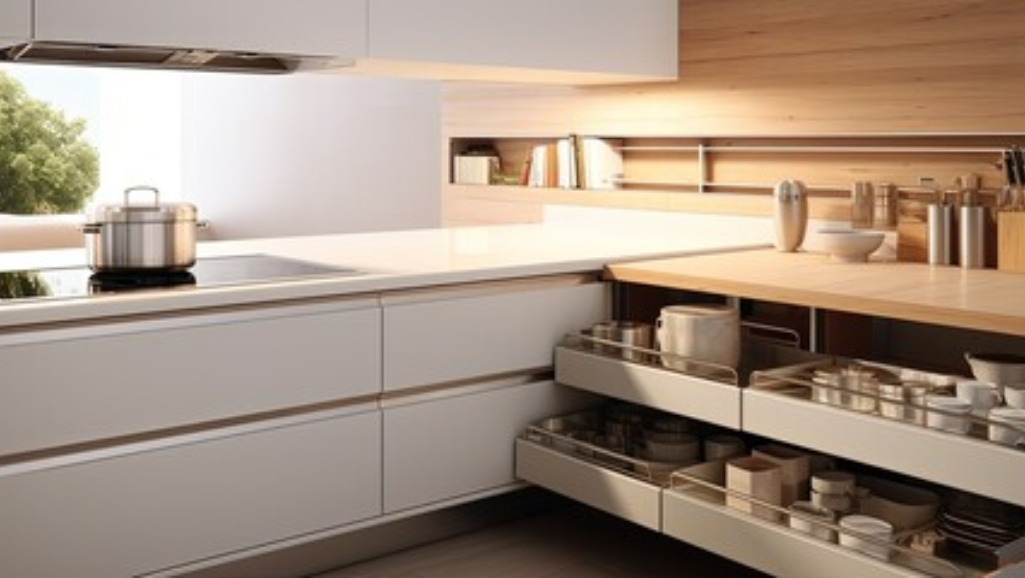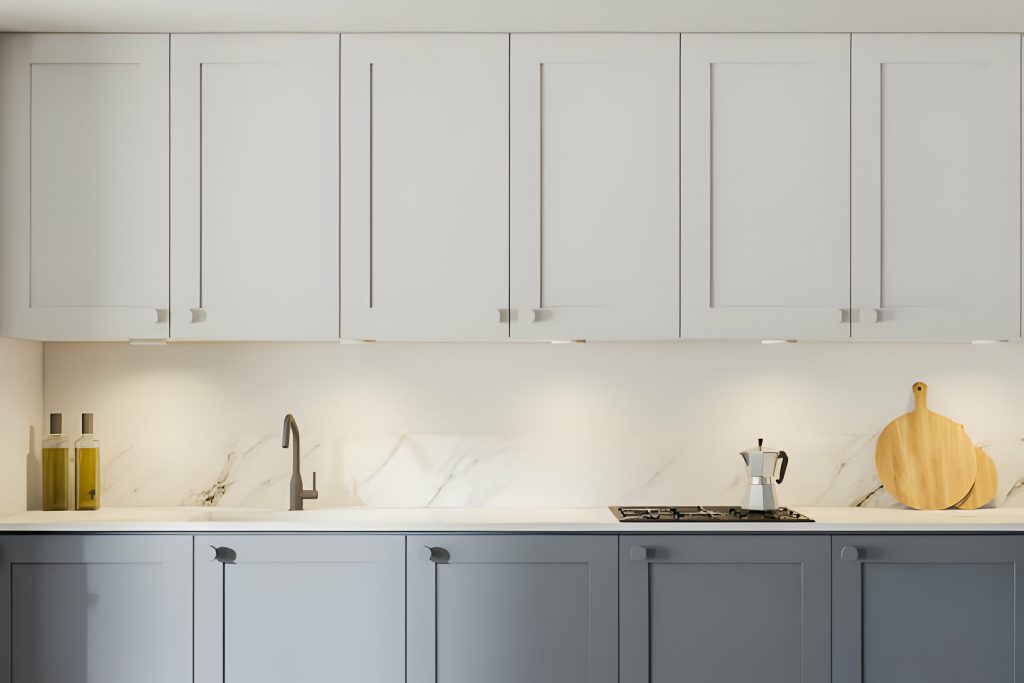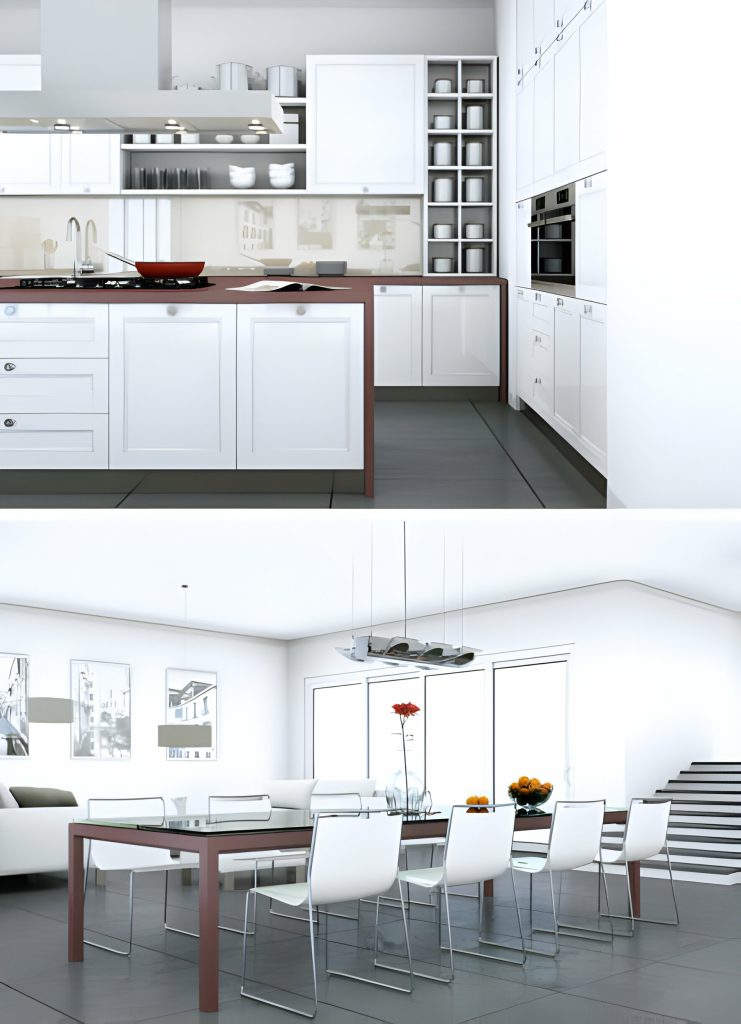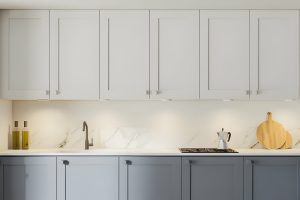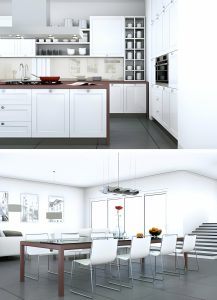In this discussion, we will guide you through the popular types of wood for cabinet doors and help you make an informed decision. We’ll discuss the factors to consider, the pros and cons of hardwood and softwood, and even explore alternative materials. By the end, you’ll have all the information you need to choose the perfect wood for your kitchen cabinet doors.
Popular Types of Wood for Kitchen Cabinet Doors
When choosing the wood for your kitchen cabinet doors, consider the popular types available. Wood is a classic and timeless choice for cabinet doors, offering a natural beauty and warmth that other materials simply cannot replicate. Unlike materials such as laminate or metal, wood adds a touch of elegance and sophistication to your kitchen space.
There are several popular types of wood to choose from for your cabinet doors. Oak is a common choice, known for its durability and versatility. It can be stained to achieve different shades and finishes, making it easy to match any kitchen style. Maple is another popular option, prized for its smooth and even grain, as well as its resistance to warping. Cherry wood is known for its rich, reddish tones and is often used to create a luxurious and high-end look.
To maintain and care for your wooden cabinet doors, it is important to keep them clean and dry. Avoid using harsh chemicals or abrasive cleaners, as they can damage the finish. Instead, use a mild soap and water solution or a specialized wood cleaner. Regularly dusting and polishing the doors will help to preserve their beauty and protect them from scratches and stains. Additionally, it is recommended to periodically check for any signs of damage, such as loose hinges or cracks, and address them promptly. By following these maintenance tips, your wooden cabinet doors will continue to enhance the beauty and functionality of your kitchen for years to come.
Factors to Consider When Choosing Wood for Cabinet Doors
Consider various factors when selecting the wood for your kitchen cabinet doors. The choice of wood will not only affect the overall aesthetic of your cabinets but also their durability and functionality. Two important factors to consider are the wood grain patterns and the finishing options for wood cabinet doors.
Wood grain patterns play a significant role in the appearance of your cabinet doors. Different wood species have distinct grain patterns that can range from straight to wavy, and from fine to coarse. Each pattern imparts a unique character to the doors, so it’s essential to choose one that complements the style of your kitchen. For example, if you prefer a sleek and modern look, a wood species with a straight grain pattern, such as maple or birch, would be a suitable choice. On the other hand, if you desire a more rustic or traditional feel, a wood species with a more pronounced grain pattern, such as oak or hickory, would be ideal.
In addition to wood grain patterns, the finishing options for wood cabinet doors are also crucial. The finish not only enhances the natural beauty of the wood but also protects it from moisture and everyday wear and tear. Some popular finishing options include staining, painting, and applying a clear coat. Staining allows the natural grain of the wood to show through while adding color and depth. Painting provides an opportunity to customize the look of your cabinets with an endless array of colors. Applying a clear coat preserves the natural beauty of the wood while providing a protective layer.
When considering the factors mentioned above, it’s essential to find a balance between aesthetics and functionality. By carefully selecting the wood species, grain pattern, and finishing options, you can create kitchen cabinet doors that not only look stunning but also withstand the test of time.
Pros and Cons of Using Hardwood for Cabinet Doors
After considering the factors mentioned above, you should now weigh the pros and cons of using hardwood for your kitchen cabinet doors. When it comes to choosing between plywood and solid wood, both have their advantages and drawbacks. Plywood is often more affordable and resistant to warping and cracking, making it a practical choice for budget-conscious homeowners. On the other hand, solid wood offers a more luxurious and high-end look, with greater durability and longevity. However, it is important to note that solid wood can be prone to expansion and contraction due to changes in humidity, which may require regular maintenance.
When deciding between stained and painted finishes for hardwood cabinet doors, it ultimately comes down to personal preference and the desired aesthetic. Stained finishes enhance the natural beauty and grain of the wood, providing a warm and inviting look. They also tend to be more forgiving in terms of hiding scratches and wear. On the other hand, painted finishes offer a wide range of color options and can create a clean and modern appearance. However, they may require more maintenance and touch-ups over time.
Advantages and Disadvantages of Using Softwood for Cabinet Doors
Softwood can offer certain advantages and disadvantages when used for kitchen cabinet doors. Here are some key points to consider:
- Advantages:
- Cost-effective: Softwood, such as pine or fir, is generally less expensive compared to hardwood options, making it a budget-friendly choice for cabinet doors.
- Easy to work with: Softwood is relatively lightweight and easy to cut, shape, and finish, making it a popular choice for DIY enthusiasts or those with basic woodworking skills.
- Versatile aesthetics: Softwood can be stained or painted to achieve a wide range of colors and finishes, allowing you to customize the appearance of your cabinet doors to match your kitchen decor.
- Natural warmth: Softwood has a warm and inviting appearance, adding a cozy touch to your kitchen space.
- Disadvantages:
- Durability concerns: Softwood is generally less durable compared to hardwood, making it more susceptible to scratches, dents, and wear over time. This may require more frequent maintenance or even replacement of the cabinet doors in the long run.
- Limited resistance to moisture: Softwood has a higher moisture content compared to hardwood, making it more prone to warping, swelling, or rotting when exposed to moisture or humidity. This can be a significant disadvantage in a kitchen environment where moisture levels can fluctuate.
- Lack of density: Softwood is less dense than hardwood, which can result in reduced strength and stability. This may lead to issues such as sagging or warping of the cabinet doors over time.
- Limited lifespan: Due to its lower durability and moisture resistance, softwood cabinet doors may have a shorter lifespan compared to their hardwood counterparts.
Considering these advantages and disadvantages, it is important to carefully weigh your priorities and the specific requirements of your kitchen before deciding to use softwood for your cabinet doors.
Alternative Options for Kitchen Cabinet Door Materials
If you’re looking for alternative options for kitchen cabinet door materials, there are several choices that offer different advantages and disadvantages compared to softwood. One popular choice is glass cabinet doors. Glass doors can add a touch of elegance and sophistication to your kitchen, as they allow you to showcase your beautiful dishware and decorative items. They also create an illusion of space, making your kitchen appear larger and more open. However, glass doors can be prone to smudges and fingerprints, requiring regular cleaning to maintain their pristine appearance.
Another option to consider is metal cabinet doors. Metal doors are known for their durability and strength, making them a great choice for busy kitchens. They are resistant to heat, moisture, and stains, making them easy to clean and maintain. Metal doors also have a sleek and modern look, adding a contemporary touch to your kitchen design. However, metal doors can be more expensive compared to other materials, and they may not be suitable for traditional or rustic kitchen styles.
When choosing alternative materials for your kitchen cabinet doors, it’s important to consider your personal style, budget, and maintenance preferences. Glass and metal doors offer unique benefits and can enhance the overall aesthetic of your kitchen. Take the time to research and explore different options to find the perfect choice for your kitchen cabinet doors.
